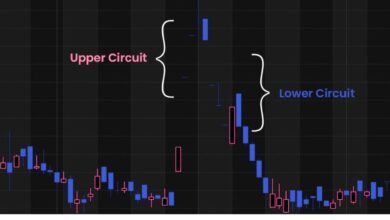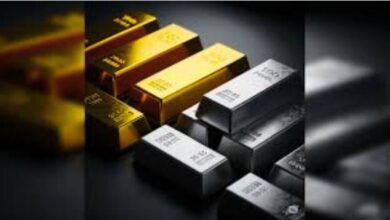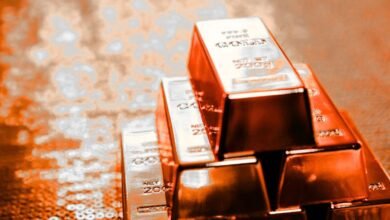Title: Pokarna’s 6% Plunge: A Crack in the Quartz or a Golden Buying Opportunity
Subtitle: A deep-dive analysis into Pokarna's sudden stock drop, its resilient one-year journey, and its curious place amidst the turbulent tides of the BSE METAL index

Introduction: The Tremor on Dalal Street
In the vast, churning ocean of the stock market, some days are calm, and others bring sudden, sharp squalls that leave investors scrambling for the rails. Today was one of those days for shareholders of Pokarna Ltd. A swift, decisive 6% plunge in its share price—a tremor that saw the stock settle at a nervous Rs 895.0—sent ripples of concern through the trading community. Was this a random wave, or the leading edge of a powerful storm?
On the surface, it might seem like just another bad day in a tough sector. After all, the broader BSE METAL index, the very benchmark against which many of these industrial giants are measured, was also nursing its wounds, down a significant 1.0% to land at 30,663.3. But as any seasoned market-watcher knows, the devil—and the opportunity—is always in the details.
The market is never a monolith. It’s a complex ecosystem of winners and losers, each with its own story. While Pokarna was taking a hit, other titans within the same index were showing glimmers of strength. Stalwarts like JSW Steel (up 0.5%) and Jindal Steel (up 0.2%) were swimming against the current, reminding us that even on a red day, green shoots can emerge. Meanwhile, other heavyweights like NMDC (down 1.9%) and Vedanta (down 1.7%) were caught in the same downdraft as the index.
This article is your compass. We will dissect this single day of trading and place it under a microscope. But more importantly, we will zoom out to understand the bigger picture. We will journey back one year to see how Pokarna has performed, contrasting its impressive annual gains with the sluggish movement of the wider metal sector. We will uncover the fundamental story behind Pokarna—a unique business that sets it apart from traditional metal producers.
So, grab a cup of coffee. Let’s peel back the layers of today’s dramatic price action and explore whether Pokarna’s fall is a warning sign to heed or a rare discount on a resilient company.
Section 1: The Anatomy of a 6% Plunge – What Happened Today?
A 6% drop in a single trading session is never insignificant. For investors holding Pokarna, it was a day of watching their portfolios bleed red. The immediate question on everyone’s mind is simple: Why?
While pinpointing a single reason for a stock’s daily movement can be elusive, we can analyze the context to form an educated perspective.
1. The Weight of Sectoral Weakness:
The most obvious culprit is the overall negative sentiment in the metals and mining space. With the BSE METAL index down 1.0%, a risk-off sentiment was palpable. When the entire sector is under pressure, even fundamentally strong stocks can get dragged down. Think of it as a strong swimmer caught in a powerful rip current; their individual strength is tested by the overwhelming force of the water around them. Pokarna’s 6% fall, while steeper than the index’s 1% dip, suggests it might be more sensitive to this sectoral mood or that other factors were at play.
2. The Company-Specific Angle: Profit Booking or Hidden News?
Often, a stock that has performed well becomes a prime candidate for “profit booking.” As we will explore later, Pokarna has had a decent run over the past year. Traders and short-term investors who have enjoyed these gains might see a day of market weakness as the perfect excuse to cash in their chips. This creates a cascade of selling pressure, which can accelerate a stock’s decline, often without any negative news about the company itself.
It’s also possible that there was an institutional sell-off or a piece of news not yet widely disseminated that prompted the sharp fall. However, in the absence of a formal announcement from the company, profit booking in a weak market remains the most plausible hypothesis.
3. The Contrast of the Steel Giants:
Today’s market action becomes even more fascinating when we look at the outliers. While the index was down, JSW Steel (+0.5%) and Jindal Steel (+0.2%) were in the green. This isn’t just random noise; it tells a story. It suggests that the market is differentiating between various sub-sectors. Perhaps there’s positive sentiment around steel due to government infrastructure pushes or specific price trends, which isn’t lifting other parts of the materials sector, like base metals (Vedanta) or iron ore (NMDC).
This divergence is crucial. It signals that investors aren’t selling off the “metals” basket indiscriminately. They are making specific bets, and today, the bet was against companies like Pokarna and in favor of steel producers.
Section 2: Zooming Out – The One-Year Tale of Two Journeys
Today’s trading session is just one frame in a much longer film. To truly understand a company’s health and an investor’s potential, we must rewind the tape and look at the bigger picture. The one-year performance data paints a starkly different and far more illuminating story.
Pokarna: The Resilient Outperformer
Over the last 12 months, Pokarna’s journey has been one of rewarding patience. The stock has climbed from Rs 814.7 to its current level of Rs 895.0. This represents a solid gain of Rs 80.3, translating to an impressive 9.9% return.
Let’s pause and appreciate this. In a year marked by global uncertainty, inflation fears, and interest rate hikes, delivering a nearly 10% return is a testament to the company’s underlying strength and investor confidence. This performance suggests that despite today’s sharp correction, the long-term trend has been positive. Today’s 6% drop, when viewed in this context, looks less like a structural collapse and more like a volatile pullback within a larger uptrend. It has eroded some of the year’s gains, but the overall story remains one of value creation.
The BSE METAL Index: A Story of Stagnation
Now, let’s contrast Pokarna’s journey with that of its broader sector. The BSE METAL index has moved from 30,390.0 to 30,663.3 over the same one-year period. This translates to a minuscule gain of just 0.9%.
This is a profoundly important insight. The entire metals sector, as a whole, has essentially gone nowhere for a year. It has been a frustrating hold for passive index investors. Against this backdrop of sectoral stagnation, Pokarna’s 9.9% gain shines even brighter. It is a clear case of alpha generation—the ability of a stock to outperform its benchmark index. This tells us that Pokarna’s fate is not entirely tied to the whims of the global commodity cycle that governs many of its index peers. It has its own unique story, its own drivers, and its own market.
The Index’s Hidden Stars:
Just as today had its winners, the one-year story also reveals star performers who have lifted the index from an even worse fate. The top gainers over the past 12 months were:
-
JSW Steel: An astounding 22.5% gain.
-
Hindalco: A strong 10.6% gain.
-
APOLLO TUBES: A respectable 10.3% gain.
These companies have been the engines of the index. Their stellar performance highlights a key theme: the market has been highly selective. It has rewarded companies with strong execution, favorable positioning (like steel for infrastructure or aluminum for the green energy transition), and robust balance sheets. Pokarna, with its 9.9% gain, sits comfortably within this league of outperformers, further cementing its status as a company that has bucked the trend.
Section 3: The Heart of the Matter – What is Pokarna and Why is it Different?
To understand why Pokarna’s stock behaves the way it does, we need to look beyond the ticker symbol and into its actual business. Pokarna is not your typical mining or metals company.
Pokarna is primarily a world-renowned manufacturer and exporter of Quartz Surfaces and a processor of Granite.
This is the key differentiator. Unlike Vedanta (mining diverse commodities) or JSW Steel (producing a core industrial commodity), Pokarna creates a value-added, branded, finished product. Its most famous brand is “Quantra,” a premium quartz surface used in high-end kitchens, bathrooms, and commercial spaces.
This business model fundamentally changes the investment thesis.
The Bull Case (The Reasons for its Strength):
-
The US Market Engine: Pokarna derives a significant portion of its revenue from exports, particularly to the United States. The US housing and remodeling market is a primary driver of its sales.
-
A Favorable Trade Environment: One of Pokarna’s biggest tailwinds has been the imposition of anti-dumping duties by the US on quartz surfaces imported from China. This created a massive market vacuum that Indian players, especially a quality-focused leader like Pokarna, were perfectly positioned to fill. This has been a powerful engine for its growth over the past few years.
-
Brand Power and Quality: In the world of home interiors, brand and quality matter immensely. Pokarna’s “Quantra” brand has built a reputation for premium quality, allowing it to command better pricing and maintain loyal relationships with distributors and designers. It’s not selling a commodity; it’s selling an aesthetic, a piece of a dream home.
-
Capacity Expansion: The company has been actively investing in expanding its manufacturing capacity to meet growing demand, signaling management’s confidence in the long-term outlook.
The Bear Case (The Risks to Consider):
-
Dependence on the US Economy: The biggest risk is a slowdown in the US housing market. High interest rates in the US can cool down home sales and remodeling projects, directly impacting Pokarna’s order book. Any investor in Pokarna is, in a way, taking a position on the health of the American consumer.
-
Rising Competition: The success of Indian quartz exporters has not gone unnoticed. Competitors from other countries like Vietnam and Turkey are entering the market, which could lead to price pressure over time.
-
Foreign Exchange Volatility: As a major exporter, Pokarna’s earnings can be impacted by fluctuations in the USD/INR exchange rate. A stronger rupee can eat into its profit margins.
Pokarna’s story is a fascinating blend of manufacturing, branding, and international trade dynamics. It marches to the beat of a different drum than the commodity giants, which is precisely why it has managed to outperform the sluggish BSE METAL index so decisively over the past year.
Section 4: The Investor’s Compass – Navigating Today’s Volatility
So, we return to our original question: What does today’s 6% plunge truly mean for an investor? By combining our short-term analysis with our long-term perspective, we can draw some actionable conclusions.
For the Short-Term Trader:
Today’s volatility is a clear sign of risk. The stock has shown that it can be susceptible to sharp, swift movements, especially when the broader market is weak. For traders, this means that strict stop-losses are essential. The battle between the day’s bearish sentiment and the year’s bullish trend is creating a choppy environment. The smart move is to wait for the dust to settle and for a clear trend to re-emerge.
For the Long-Term Investor:
The perspective for a long-term investor is entirely different. Today’s 6% drop could be interpreted not as a danger, but as noise. The fundamental story, which has driven a 9.9% gain over the last year, remains largely intact. The key questions a long-term investor should ask are:
-
Do I still believe in the long-term demand for high-quality quartz surfaces?
-
Do I believe the US housing market will remain resilient or recover in the long run?
-
Do I trust Pokarna’s management to continue executing, expanding, and defending its market share?
If the answer to these questions is yes, then a 6% drop in an otherwise strong company could be viewed as a potential entry point or an opportunity to accumulate more shares at a discount. Buying a great company when it’s temporarily on sale is a classic long-term wealth-creation strategy. The fact that it has significantly outperformed its benchmark index over the year is a powerful argument in its favor.
Conclusion: A Tale of Resilience and Opportunity
Today, Pokarna’s stock told a story of fear, reacting sharply to a nervous market. It plunged 6%, a move that felt amplified against the backdrop of a 1% fall in the BSE METAL index.
But when we step back, a different narrative unfolds. It’s a story of resilience. A story of a company that, over the course of a year, has deftly navigated the market to deliver a nearly 10% return while its peers in the metals sector went virtually nowhere. It has stood tall alongside heavyweights like JSW Steel and Hindalco as a true outperformer.
The divergence between its daily volatility and its annual strength is rooted in its unique business model. Pokarna is not just another brick in the wall of the commodity super-cycle. It is a master artisan, crafting a branded, high-value product for a discerning global market. Its fortunes are tied not to the price of iron ore in China, but to the dreams of a homeowner in America.
For investors, the path forward requires clarity of vision. Are you a sailor navigating the choppy waves of the day, or are you a cartographer mapping the long-term currents? Today’s plunge was a test of nerve for the former. For the latter, it might just be a dot on the map that reads, “Here lies an opportunity.”
Disclaimer: This article is for informational and educational purposes only. It is not intended to be financial advice. The stock market is inherently risky, and readers should consult with a qualified financial advisor before making any investment decisions.





